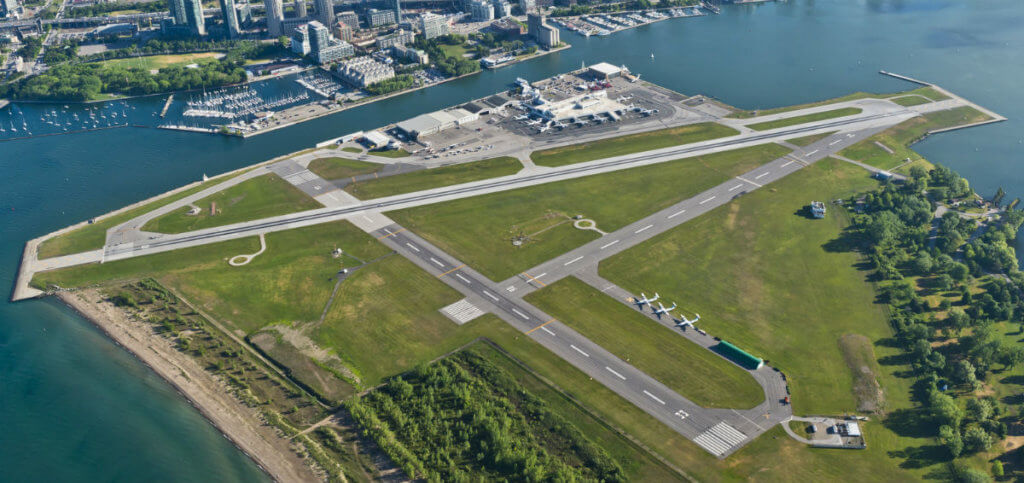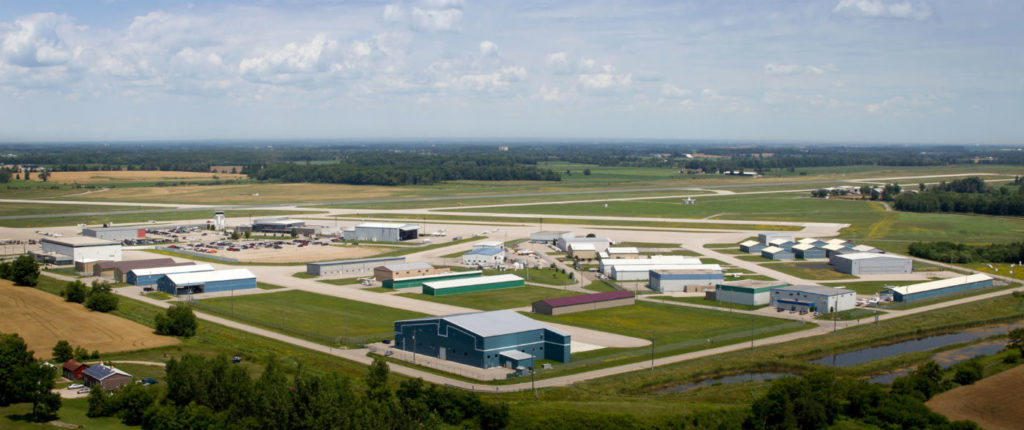Estimated reading time 9 minutes, 18 seconds.
The collapse of air travel and tourism has been a huge blow to airports across Canada that earn their living from aircraft flying.
Beyond the quiet terminals and empty gates at Pearson International Airport – Canada’s largest airport hub – hundreds of local and regional airports across Canada have seen business, finances and development plans disrupted after the World Health Organization declared COVID-19 a global pandemic on March 11.
Skies recently spoke with various regional airport executives in Southern Ontario to learn how they are managing their way through the current crisis and preparing for an inevitable rebound in flying activity.

Most airports we spoke to reported up to a 90 per cent drop in aircraft movements in spring; most scheduled, charter, training and recreational flying was suspended, and “non-essential” airport businesses were forced to close until the province approved Phase 2 and Phase 3 re-openings of various businesses.
Silent spring
The silent spring came on the 75th anniversary of the wind-down of the British Commonwealth Air Training Plan when hundreds of runways closed, and thousands of training aircraft were grounded as the Second World War drew to a close.
This year’s shutdown was triggered by a widespread reluctance of people to fly, closed borders, 14-day self-isolation rules, high infection regions and the temporary closing of non-essential businesses.
The COVID-19 disruption has come as a high cost to Canadian airports, which have received almost no direct financial support, compared to the United States where the Coronavirus Aid, Relief, and Economic Security (CARES) Actawarded US$10 billion in FAA grants to eligible airports.
The majority of airports Transport Canada privatized in 1992 are managed by cities and regional governments, making most of them ineligible to receive the Canada Emergency Wage Subsidy (CEWS) — except those governed by local airport authorities or under private ownership.
Vanishing passengers
In 2016, 49 million passengers and more than 470,000 tons of cargo flowed through Southern Ontario’s airports. Prior to COVID-19, those numbers were estimated to grow to 110 million passengers and one million tons of cargo by 2043, according to the Southern Ontario Airport Network.
As travellers have stopped flying and airlines slashed their schedules and grounded some or all of their fleets, local and regional airports with scheduled airline service saw the biggest drop in revenues.
Toronto’s Billy Bishop Airport welcomed 2.8 million passengers in 2019 and $41.7 million in revenue, including $15.4 million from Airport Improvement Fees. But in March 2020, Porter Airlines and Air Canada Express temporarily suspended commercial operations.
The airport has remained open to operators such as FlyGTA, Toronto Heli Tours and Cameron Air, as well as general aviation and Ornge air ambulance. In the latter case, the Ministry of Health has stepped in to cover fees associated with Ornge operations that have always been in place, but would normally be subsidized by the commercial airlines. These costs were associated with services such as the airport ferry, fire and security.
Porter is expected to resume service on Nov. 12.
London International Airport had a record 800,000 passengers in 2019 as well as a record number of destinations, but “we went down to rock bottom,” said president and CEO Mike Seabrook. “We had one flight daily with WestJet. Now we’re up to four a day . . . and this fall we expect to be 20 to 25 per cent of where we were prior to COVID-19.”
London received rent relief as one of the 26 national airports, “. . . but it’s not that significant because it’s a function of your revenue . . . but still appreciated,” said Seabrook.
Air Canada Jazz suspended Dash 8-300 flights to Sarnia and Kingston in late March, then dropped both Southern Ontario cities. Both communities hope another airline will step in to fill the void once travel resumes.
Diversification pays off
“In the past 10 years, Oshawa Executive Airport has grown from a small selection of businesses and 40,000 square feet of hangar space to 18 businesses and 400,000 sq ft of hangars; from 80 to 200 based aircraft and from 60,000 to 90,000 movements,” said airport manager Stephen Wilcox.
The airport’s two flight schools were shut down from late March to late June, but the charter companies flying patients and doing aerial mapping were busy as were most of the maintenance companies.
Wilcox said it’s hard to cut costs when an airport needs to stay open 24/7.
The airport runs about a $400,000 operating deficit each year, but it generates about $1.7 million in property tax. “And with our operating model, our tenants are still paying rent.”
Corporate aviation, which is currently centred at Toronto Pearson, is gradually being pushed out to regional airports. And corporate aviation companies have been making investments at airports to the north and west of the Greater Toronto area, where costs are lower.
“We’ve probably experienced a 50 per cent decline in movements that we’ve attributed to slower flight training and recreational aviation activities, but our revenue is only down by 10 to 15 per cent,” said Lake Simcoe Regional Airport general manager Michael Drumm.

This winter the airport is taking advantage of the lull in traffic to widen its 6,000-ft (1,830-metre) runway from 100 ft (30 m) to 150 ft (45 m) and install new high intensity lighting to attract more corporate and commercial jets.
On three occasions in the summer of 2019, Muskoka Airport ran out of parking space as the ramp filled with business jets bringing passengers to resorts and vacation homes in the Muskoka region, said airport CEO Len O’Connor. That led the airport-owned FBO to introduce a VIP service to make it easier for fly-in visitors to access high quality accommodation, dinner and recreational activities, which also stimulate local economic activity.
After seeing sharply reduced business jet traffic this summer, O’Connor is using his 2019 budget as a base line for 2021, with three different scenarios based on how quickly the COVID-19 health risks clear.
The Region of Waterloo International Airport is “very focused on playing a bigger role in the Southern Ontario market,” said general manager Chris Wood. “We look at COVID as a small blip in the big picture and are still planning to build out our 20-year master plan.”
Private airports endure
The GTA is ringed by several privately-owned airports that are seeing a resumption of general aviation and flight training activity.
The Brampton Flight Centre was extremely busy training pilots in response to the domestic pilot shortage when it shut down most activities in March, except maintenance and supporting a company that does aerial photography, said general manager Allan Paige.
Brampton-Caledon Airport is located in Peel region, which was one of the last regions to reopen to all commercial activities including flight training. Physical distancing had to be introduced throughout the flight school, including the ground school, with only 20 students accommodated in a classroom that used to seat 60.
It’s business as usual at Toronto Buttonville Municipal Airport in Markham since the airport was put up for sale by its co-owners Cadillac Fairview and the Sifton family (Armadale) after redevelopment plans appear to be in limbo. Cadillac Fairview bought a stake in the 170-acre site in 2010.
Collingwood sold the Collingwood Municipal Airport in March 2019 for $4.1 million to Winterland Developments Ltd. which is owned by Geordie Dalglish, who has been interested in building at the airport since at least 2012. Construction of two corporate hangars was paused in the spring because of the pandemic.









Very interesting summary of effects of the pandemic on smaller airports and cities in Southern Ontario.
Oshawa’s traffic for September is now higher by volume than September 2019 according to airport manager Steve Wilcox.
Trading traffic at Waterloo is so busy that the ATIS now has a disclaimer.
“Due to capacity limits traffic may be delayed entering the Zone”
While airlines are grounded, utility aviation has gone nuts. Once the US border is reopened count on it spiking again.